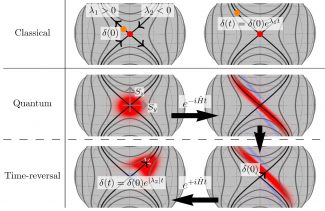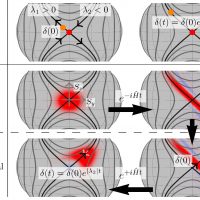News
The quantum analog of chaotic dynamics, quantum scrambling, spread quantum information exponentially fast within a quantum many-body system. Understanding how the information spread is a highly nontrivial and crucial question in the field of quantum information science (QIS). Recently, it has been theoretically argued that quantum scrambling is intimately connected with quantum metrology (QM), where the sensitivity of a sensor is enhanced through many-body entanglement. However, harnessing this powerful tool for quantum metrology (QM), has been challenging due to the inherent difficulties in controlling, detecting, and measuring the tiny and complicated features associated with scrambling and chaos.
A recent breakthrough by the group of Prof. Vuletić at MIT, in collaboration with Harvard, has experimentally demonstrated the feasibility of using quantum scrambling to exponentially enhance QM in a quantum many-body system. By engineering the system to perfectly reverse the direction of time propagation, the team was able to cancel out the effects of scrambling (i.e., unscramble) and provide a pure increase in the signal-to-noise ratio, as illustrated in the accompanying figure.
Furthermore, the team established that the fast scrambling of quantum systems, an area actively investigated in QIS, can be in general mapped to entanglement-assisted QM by adding time-reversal control. This result opens up exciting new possibilities for applying time-reversal protocols to a wider range of quantum physics fields and paves the way for further exploration of the intersection between QIS and QM.

The classical and quantum trajectories of time evolution. Using the time-reversal method, complicated features of quantum entanglement are converted an average displacement which is exponentially gained as in the classical case.
